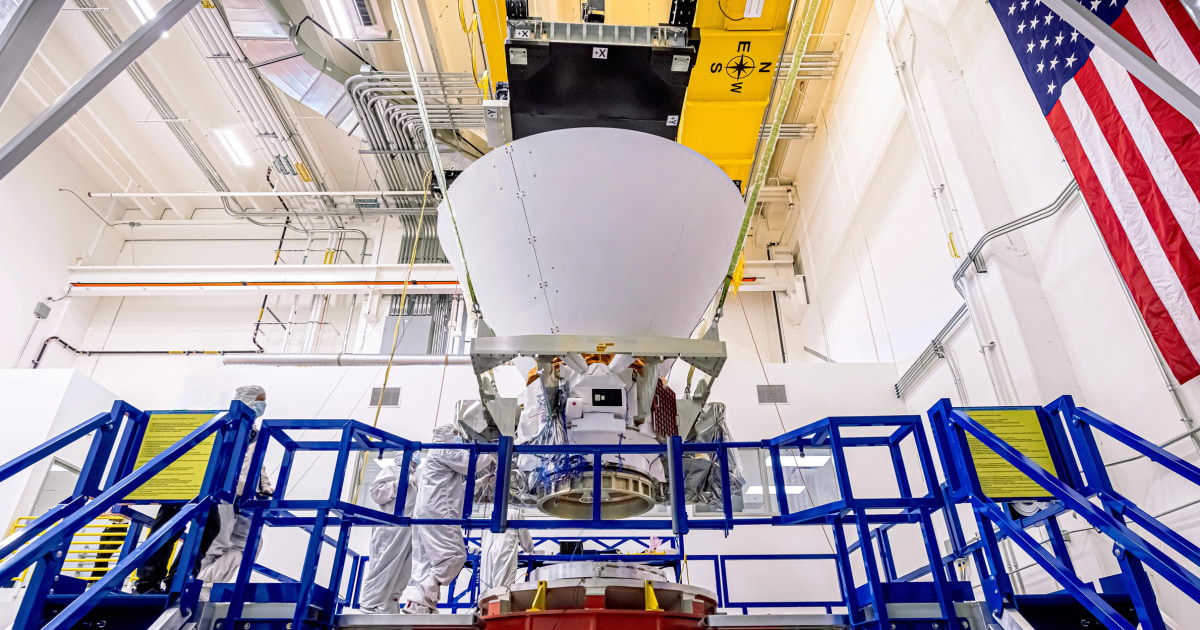NASA’s Groundbreaking Mission: Charting the Cosmos and Unveiling 450 Million Galaxies
In a bold leap towards expanding our understanding of the universe, NASA is set to launch an innovative space observatory designed to map a staggering 450 million galaxies. This groundbreaking mission, known as the NASA Galaxy Mapper, is poised to revolutionize our perception of the cosmos and the intricate structures within it. As we prepare for this monumental endeavor, it’s essential to explore what this mission entails, its potential implications for astrophysics, and how it could answer some of the most pressing questions about our universe.
The Vision Behind NASA’s Groundbreaking Mission
At the heart of NASA’s mission is a desire to chart the vast expanse of the universe. Currently, astronomers have cataloged approximately 2 trillion galaxies, but much of this data remains incomplete and unrefined. The NASA Galaxy Mapper aims to fill these gaps by creating a comprehensive map that promises unprecedented detail and accuracy.
The observatory is equipped with advanced imaging technology that will allow it to capture light from distant galaxies, some of which are billions of light-years away. By analyzing this light, scientists will be able to glean critical information about the composition, structure, and evolution of these galaxies.
Key Objectives of the Mission
The primary objectives of this groundbreaking mission include:
- Mapping Galaxy Structures: The observatory will create a detailed 3D map of galaxy formations across the universe.
- Studying Cosmic Evolution: By examining galaxies at various stages of evolution, scientists hope to understand how galaxies form and change over time.
- Dark Matter Insights: The mission will also investigate the role of dark matter in galaxy formation, a significant area of interest in modern astrophysics.
- Cosmic Distance Ladder: The data gathered will help refine our methods of measuring cosmic distances, crucial for understanding the scale of the universe.
The Technical Marvels of the NASA Galaxy Mapper
This mission is not just ambitious; it’s a technical marvel. The observatory will utilize cutting-edge technology, including:
- High-Resolution Cameras: Equipped with state-of-the-art cameras, the observatory will capture images with remarkable clarity, allowing scientists to observe faint, distant galaxies.
- Multi-Spectral Imaging: The ability to capture images across various wavelengths will provide insights into the composition of galaxies, including their gas, dust, and star formation activities.
- Artificial Intelligence: AI algorithms will assist in processing the vast amounts of data collected, identifying patterns and anomalies that would be difficult for human researchers to detect.
Understanding the Universe’s Structure
One of the most exciting aspects of this groundbreaking mission is its potential to enhance our understanding of the universe’s structure. Galaxies are not randomly distributed throughout space; they form clusters and superclusters, which are bound together by gravity. By mapping 450 million galaxies, scientists will be able to uncover the large-scale structure of the universe, providing insights into how matter is distributed and the forces that shape it.
Implications for Astrophysics and Cosmology
The implications of NASA’s mission extend far beyond merely mapping galaxies. The data collected will have profound effects on various fields of astrophysics and cosmology:
- Understanding Dark Energy: The mission could shed light on the mysterious force driving the universe’s accelerated expansion, known as dark energy.
- Galaxy Formation Theories: With new data, scientists may revise existing theories regarding how galaxies form and evolve, leading to a deeper understanding of cosmic history.
- Exoplanet Research: Insights gained from studying distant galaxies may also have implications for the search for exoplanets and the conditions necessary for life.
Collaboration and Global Impact
NASA’s groundbreaking mission is not just a national endeavor; it represents a collaborative effort involving international space agencies and research institutions. By pooling resources and expertise, scientists around the world will contribute to interpreting the data and enhancing our collective understanding of the universe.
This global collaboration is essential, as many of the questions surrounding the cosmos are universal. By sharing findings and methodologies, researchers can build upon each other’s work, accelerating progress in the field of astrophysics.
Challenges Ahead
Despite the excitement surrounding this groundbreaking mission, challenges remain. The vast distances involved in space mean that the data collection process will be complex and time-consuming. Additionally, the observatory must contend with cosmic phenomena such as cosmic rays and interstellar dust, which could interfere with observations.
Moreover, the sheer volume of data produced will require advanced processing capabilities and innovative analytical techniques. However, the scientific community is optimistic that these challenges can be overcome through collaboration and technological advancements.
Looking to the Future
NASA’s mission to chart the cosmos and unveil 450 million galaxies marks a significant milestone in our quest to understand the universe. As we stand on the brink of this revolutionary journey, the potential discoveries that await us are both thrilling and humbling. The insights gained from this mission could redefine our understanding of the universe and our place within it.
In conclusion, as we embark on this ambitious mission, we are reminded of the endless possibilities that lie ahead in the realm of space exploration. The NASA Galaxy Mapper is not just about counting galaxies; it’s about unlocking the secrets of the universe, inspiring future generations of scientists, and deepening our collective knowledge of the cosmos.
See more Future Tech Daily

